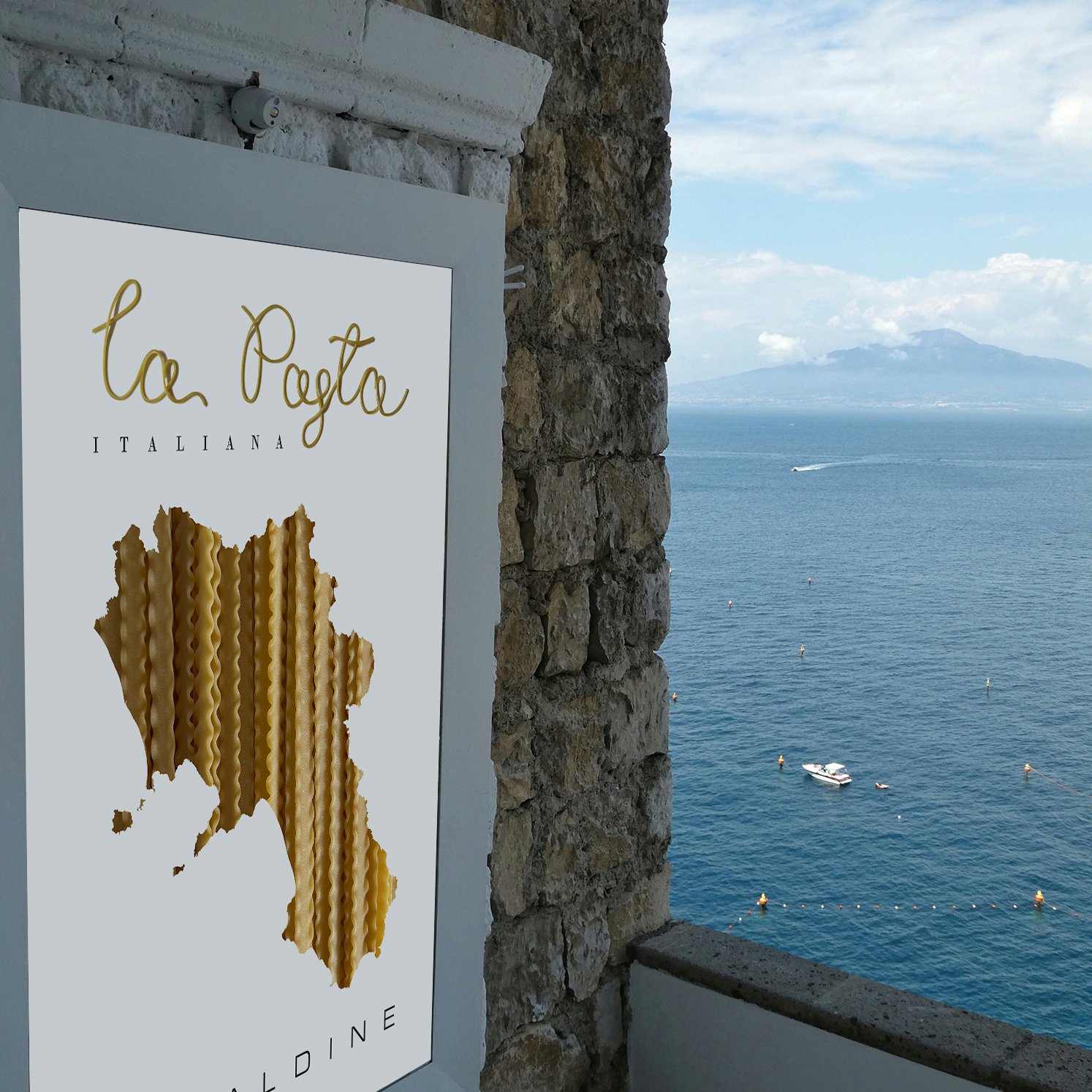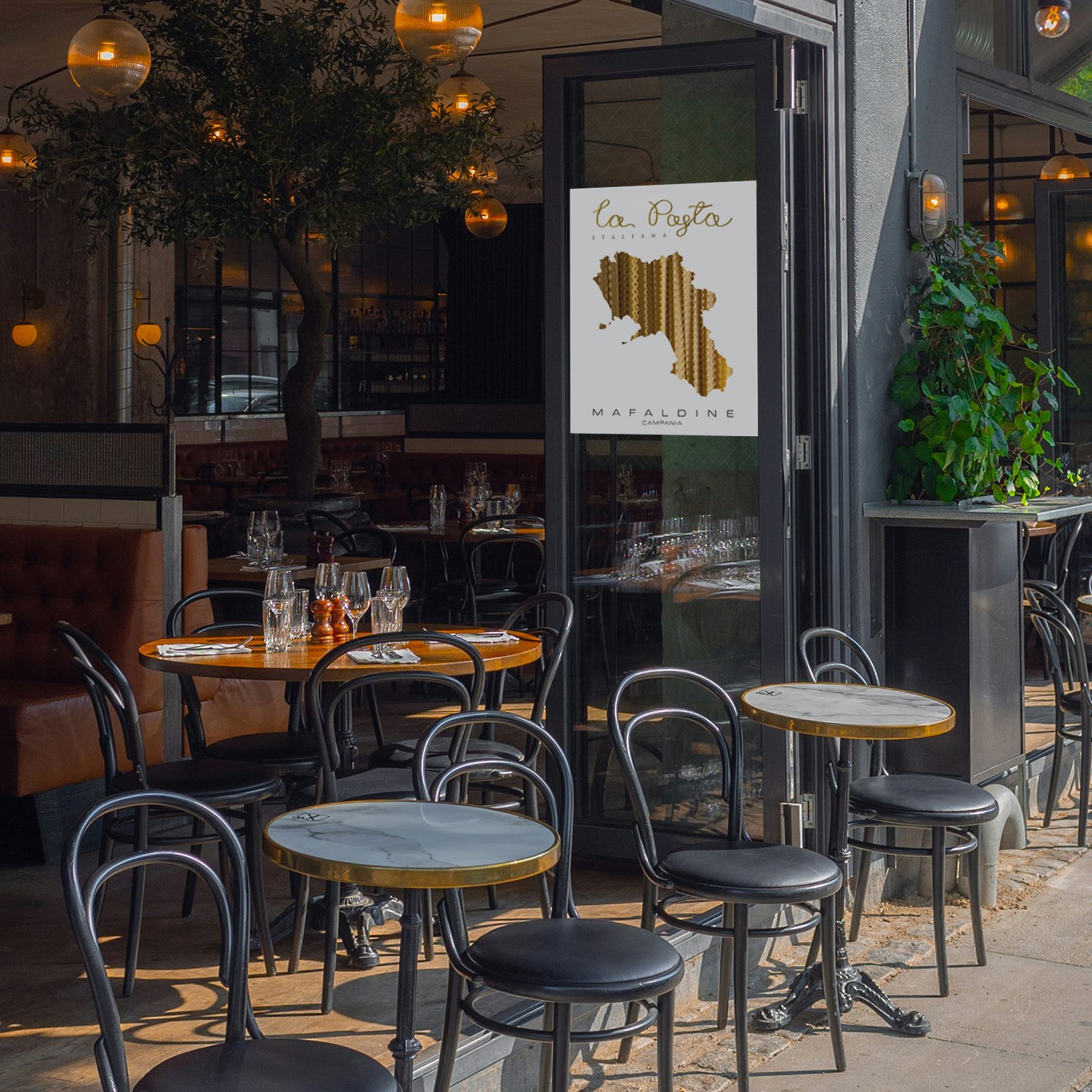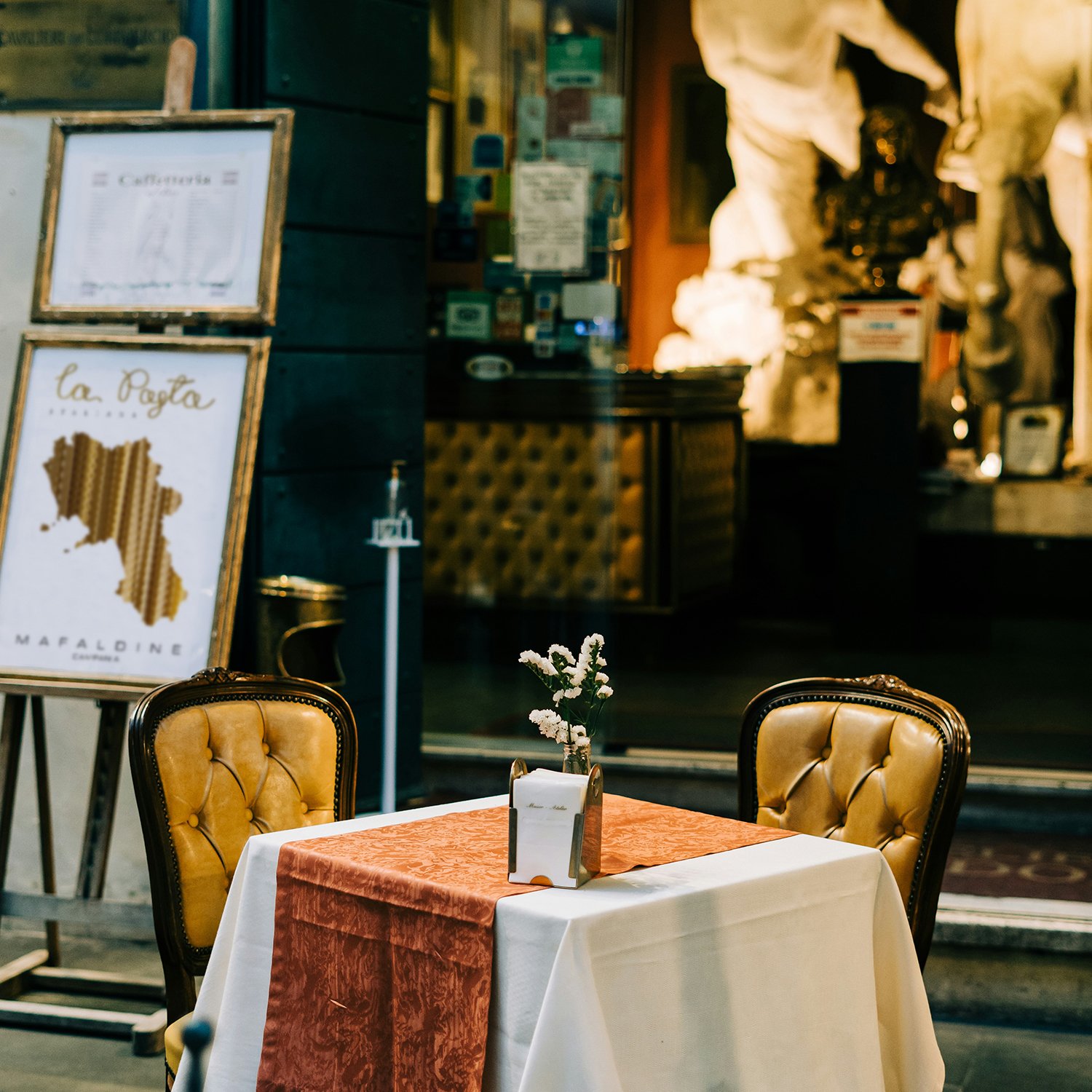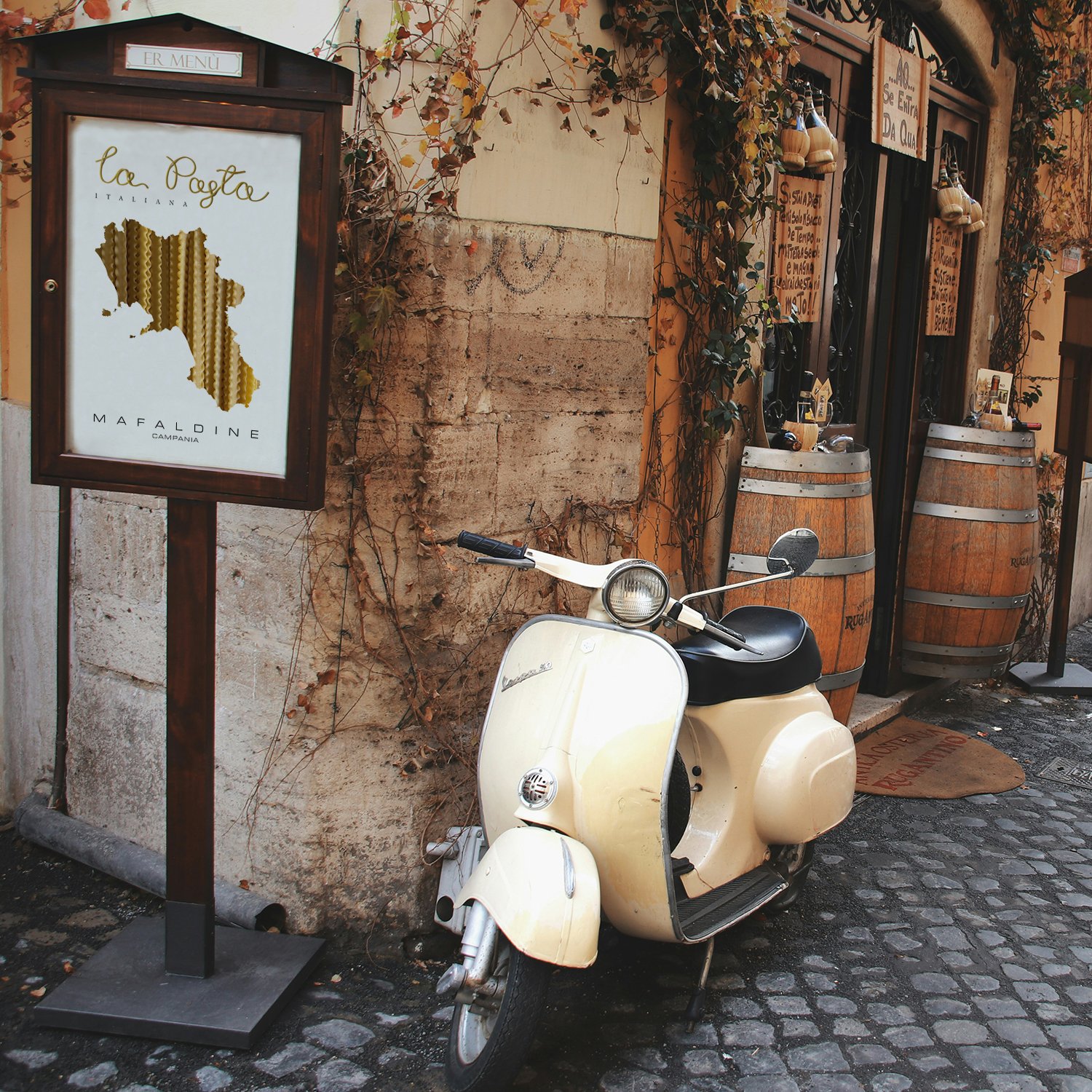Here is the first in a brand new series of original artwork. This time we’re taking on the fabulous world of Italian pasta, one (or possibly more) from every Italian region, because all regions has their very own special pasta, fitting perfectly with their particular sauces. For instance Trofie from Liguria on the Italian riviera, that fits like a glove with the Pesto Genovese. For the first in the series however, we’re traveling down to Napoli and the region of Campania to try their pasta fit for royalty, the Mafaldine.
Mafaldine was originally called Fettuccelle Riccie and was created in Naples, next to one of the most dangerous volcanoes in the world, Mount Vesuvius. When Princess Mafalda of Savoy, the daughter of Italy’s King Vittorio Emmanuele III and Queen Elena of Montenegro, was born in 1902 the royal baby was honored by changing the name of the pasta to Mafaldine. Princess Mafalda happened to have wavy curly hair just like the the pasta, so the pasta fitted her perfectly.
On a side note, to honor the occasion of the royal wedding between Vittorio Emanuele and Queen Elena, specifically to honor Queen Elena of Montenegro, amaro maker Stanislao Cobianchi changed the name of his Elisir Lungavita to Amaro Montenegro. Still today you will find Amaro Montenegro in most Italian bars.
The Mafaldine is made of 1 centimeter wide pasta ribbons, las ong as spaghetti, with wavy sides that are slightly thicker than the middle part. This to make the sides sturdier, a feature that supposedly enhances the flavor of the pasta and its sause. Because of its royal connection Mafaldine is often used for special occasions, served with ragù or ricotta.
The life of Princess Mafalda however was very tragic. She married a German prince, Philipp of Hesse who worked as a Nazi intermediary between Germany and Italy during WWII. Adolf Hitler and Joseph Goebbels mistrusted the Princess and believed that she was collaborating with the allied forces. Mafalda was arrested and was sent to Buchenwald concentration camp, where she died.






